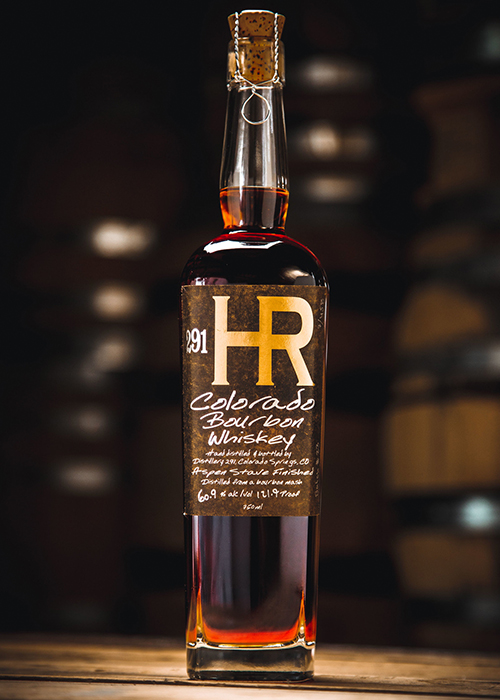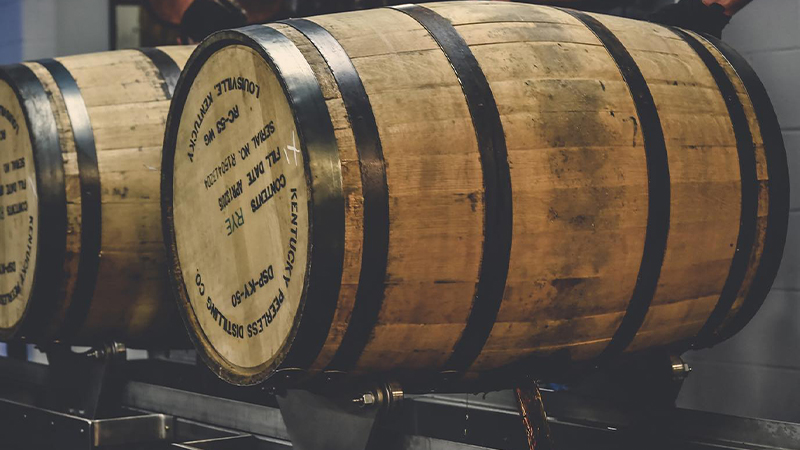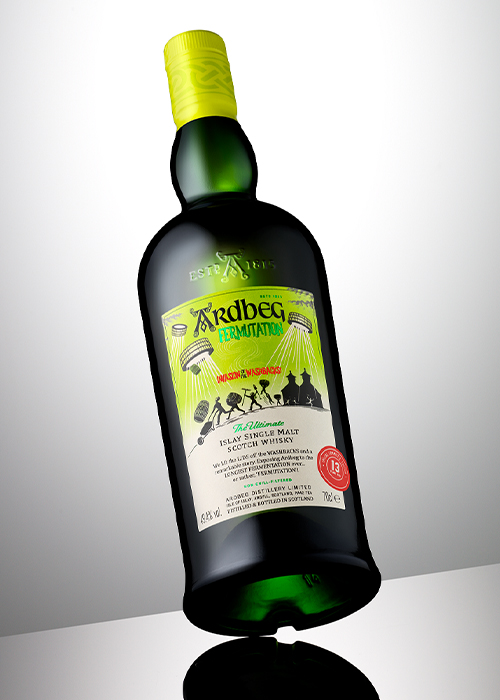Michael Myers remembers how he came up with the recipe for High Rye Colorado Bourbon, a limited annual release at Distillery 291, the whiskey producer he founded in 2011. It was the very first batch made by his then-recently hired employee, head distiller Eric Jett.
“I was doing something while we were talking, and I said, ‘You need this many pounds of rye,’ and he says ‘Okay!’” Myers recalls. “He comes back to me at the end of the day and he says, ‘You know, Michael, the numbers aren’t matching up for the recipe.’”
Checking the amounts, they quickly found the discrepancy: Miscommunication had resulted in a mash bill with 32 percent malted rye, instead of the 19 percent malted rye in the distillery’s regular bourbon recipe. As a small producer, Myers couldn’t afford to dump the mistake and start again.
Don’t Miss A Drop
Get the latest in beer, wine, and cocktail culture sent straight to your inbox.
“So what are you going to do?” he asks. “You have thousands of dollars of grain. You’re not going to just throw it out.” The two decided to see how things looked after the whiskey was fermented and distilled.
“It came off the still — a white whiskey — and it was phenomenal,” he says. “Really well balanced and really pretty, as a white dog. So we said, ‘OK, let’s put it in a barrel.’”
That initial snafu has since turned into a fan favorite, despite having some trouble finding its audience. Now one of the distillery’s allocated bottles, High Rye Colorado Bourbon, is a multiple award winner, with current editions bottled at a collector-appealing barrel proof.
“Early on, it wouldn’t sell that easily,” Myers says. “It sells great now.”
That kind of happy accident might sound like a rarity in the science-driven world of whiskey distillation, but it’s actually a fairly regular occurrence. While much of whiskey production relies on laboratory precision in terms of exact volumes, measures, and temperatures, mistakes and accidents can be an unexpected source of innovation, moving things forward for everyone from small craft producers to some of the biggest names in spirits.
Variables From Nature
Human error and miscommunication is just one way chance plays a role in distilling. Another opportunity comes from one of whiskey’s most important variables. While science gives us weights and measures, wood comes from nature.

“Barrels are the one thing that we don’t have control over,” Myers says. “We can char it, but the wood, the size of the pores of the wood, all those things change, and they make the flavor different from barrel to barrel and batch to batch.”
That kind of variation can be a welcome tool for distillers, who rely on the differences among wooden barrels to compose complex and rewarding blends. But sometimes, the quirkiness of wood — and human craftsmanship — can force a distiller’s hand.
At Kentucky Peerless Distilling Company in Louisville, head distiller Caleb Kilburn says that barrel variations led to one of his most sought-after expressions.
“We work with a craft artisan cooperage named Kelvin that does a lot of hand-manufacturing of their barrels,” he says. “So there are some human elements that do play a role in manufacturing that barrel. It’s going to be hand- assembled. They use oak-driven fire to toast and char their barrels. It’s just a very hands-on approach. Kilburn adds, “We love their craftsmanship, but occasionally we’ll come across a barrel that, in the course of its maturation, springs a leak.”
When that happens, the whiskey has to go somewhere.
“So rather than letting that liquid go to waste, you put that into a new-char, white oak barrel,” he says. “Now this is a perfect life raft to carry that whiskey to its maturity, but it’s already picked up some of the color, flavor, aromas, and character from that first barrel, and what ends up happening is that second barrel kind of supercharges that part of the flavor profile.”
The standout character of those “life raft” second barrels led to the development of an acclaimed new release, Kentucky Peerless Double Oak, though Kilburn acknowledges that he now uses second barrels intentionally.
“Our Double Oak expression started as an accident, but rather than trying to cover it up, or just putting it in with a regular product, we embraced it and found something really special,” he says.
Amazing Accidents
Not every accident results in a welcome innovation, of course, and not all of them happen very early in the production cycle. Brendan McCarron, master distiller at Scotland’s Bunnahabhain, Deanston and Black Bottle, among other brands, notes one unwanted mistake that often rears its head at the end of the process: moving a finished, ready-to-be-bottled spirit into the large vessel known as the bottling vat, when that bottling vat is not completely empty. That can mean the unintentional blending of an expensive, 20-year-old single malt with a much younger — and much less valuable — 12-year-old single malt or single grain Scotch. Labeling requirements mean that the age statement must refer to the youngest spirit in any blend.

“So you accidentally take all of this amazing 20-year-old whiskey, and you’ve just turned it 12 years old,” he says. “You’ve just taken eight years of value out of your business. That’s not a mistake you want to make. And certainly if you do make that mistake, you want it to be a tiny volume of the old one and a huge volume of the young one, so you haven’t lost too much.”
That particular blend, he says, can result in an eye-opening spirit.
“There have been a few occasions where that’s happened and people have then tasted it and went, ‘Holy shit, this tastes amazing!’”
In fact, some distillery accidents work out very well indeed. Back in 2007 at Scotland’s Ardbeg, a broken boiler led to an unusually long fermentation that ended up lasting for three full weeks instead of the distillery’s normal 72-hour fermentation. According to Ardbeg master distiller Dr. Bill Lumsden, that crisis offered an opportunity to experiment with local wild yeasts and bacteria in the spirit of Belgium’s lambic brewers.
“So I said, OK, here’s what we’ll do. Just open the lids of the wooden washbacks and open the windows to the tun room, and just leave it open to the atmosphere for two days. I was basically trying to get anything and everything in there.”
Those local microflora and the longer fermentation period resulted in a remarkably different whiskey, he says, starting with the whiskey wash.
“Suffice it to say, after three weeks, it was incredibly sharp, sour, and acidic — just everything I expected it would be,” Lumsden says. Distillation changed things even further. “The new-make spirit was very, very different from the classic Ardbeg. It still had some of the peaty, smoky flavors in there, but it also had a sharpness and a waxiness to it. The distillation took the edge off the sourness, but it kept the waxiness.”
After aging for more than a decade, that slow-fermented spirit was released this year as Ardbeg Fermutation, a 13-year-old expression that was exclusively available for members of the Ardbeg Committee, the distillery’s fan club.
“Fermutation was a proper cockup,” Lumsden says. “The best thing to do is compare it alongside a classic Ardbeg 10 year old. The classic Ardbeg is very smoky, very tarry, slightly savory but also slightly sweet and a little bit salty, whereas this has arguably more finesse to it. It’s got more of these curious floral, herbal flavors, and it’s got a very distinct sherbet-y sharpness.”
By any account, it was a successful experiment.
“We are very adept at turning what could be a disastrous accident into something that is highly desirable, highly sought-after, and highly collectible,” Lumsden says. “We had about 2,800 9-liter cases worth of Fermutation, and our understanding is it sold out in 40 minutes.”
Telling the Truth
Mistakes in whiskey-making present another possible upside: Sometimes they make for pretty good marketing. In the world of bourbon, the most famous example is Wild Turkey Forgiven, a 2013 special release hailed in press releases as “the whiskey that wasn’t supposed to be.” It was created, the story goes, when the Wild Turkey distillery crew “unwittingly” mixed rye whiskey with bourbon. “Despite its accidental beginnings,” the press release says, “Wild Turkey Associate Master Distiller Eddie Russell quickly realized that he had an exceptional whiskey more than worthy of bringing to market, hence the name ‘Forgiven.’”
Beyond their role in advertising, mistakes also serve as evidence that whiskey makers aren’t actually super-human.

“The perception of distillers being all-powerful deities with absolute control over the process is a fairytale,” Kilburn says. “We do our best to guide the process in the direction that we see fit, but sometimes Mother Nature has other plans.”
Instead, distillers say, accidents can help customers look beyond the sometimes famous personalities who make their favorite spirits.
“They always talk about the genius of this person,” McCarron says. “And you know, that’s all nice and stuff, but frankly, quite often it’s bullshit, too. If the whiskey tastes great and different, then it is an opportunity to talk about more than just the people who make the whiskey.”
Beyond humanizing distillers, mistakes also provide insight into production.
“These accidents, what we’re showing is there is a randomness in our process,” McCarron says. “We could spend lots of money, and we could super-scientifically study every last variable in Scotch whisky, and we could start to minimize the amount of variables that happen during our process. But really, we don’t want to. It’s actually the beautiful randomness associated with making Scotch whisky that makes Scotch whisky so special.”
The same holds true for bourbon, Irish, Japanese, and all other great whiskeys — and probably for most of human creation.
For Myers, a former professional photographer, mistakes like his original High Rye Colorado Bourbon are not unlike lucky accidents in photography. On one assignment in Berlin, he recalls, his digital Hasselblad camera started making double exposures, stamping an additional negative image onto whatever he shot. Instead of deleting those pictures, he embraced them, completing the assignment with double exposures in all of his shots.
“In the world in general, mistakes have innovated so many things,” he says. “People do things, and something’s not supposed to go that way, and all of a sudden it does, and you discover a new thing.”